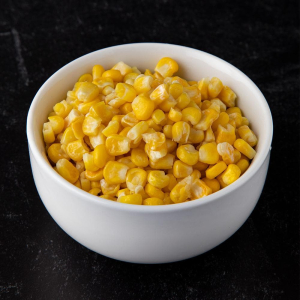Harnessing Harvest: Traditional vs. Modern Methods in Freeze-Dried Corn Collection
•Corn, from the field to freeze-dried products, is a riot of old and new, and this essay, showcases how different ways of collecting it can impact its nutritional quality and efficiency.
Traditional Collection Methods
Manual Gathering
•Manual labour is important in traditional corn collection. Farmers walk on foot through the cornfield, plucking ripe corn off its stalk one by one with their hands. This method encourages selective harvesting. There are many small hard, thin layers of corn, all of which can be eaten, making possible a variety of tastes, and even some nutrition. But the farmer who harvested by hand can pick just those ears that seem particularly plump and juicy just by looking. Then they clean the corn fleas away without being too rough on the corn itself. In the end, the corn is tender and lush – just the way the farmer might prefer it before freeze-drying.
Natural Field Drying
•Corn headed for the dryer will generally be left in the field until it reaches a ‘natural air-dry state of low moisture’, or approximately 15 per cent, and then picked up. It requires the correct natural weather to work and therefore is not without risk, but it is seen as environmentally benign and a way of enhancing the corns natural flavours.
Modern Collection Methods
Mechanized Harvesting
•Modern corn-collector has been installed a mechanized harvester in the field based on new technologies. The idea is to cover a much larger area in a short while with far less labor and much earlier in terms of time to market. Although they are designed to be efficient in collection and cut down the time for harvesting, the simple mechanical way of dealin can be sometimes too drastic, causing damages inside the corn kernels.
Pre-Processing Collection
•This stands in stark contrast to the more traditional walks in the fields during which chasers hand-picked cobs, stripped each kernel by hand, and sun-dried them for storage. Modern corn places less reliance on sun-drying in order to prevent localised mould growth, and those collecting freeze-dried corn often utilise modern pre-processing; in more developed areas of the field, modern machinery is deployed to harvest and immediately transport freshly scraped cobs to waiting trucks for transfer to the freeze-drying facilities. In doing so, the corn goes straight from the field to the freeze-drying operation, ensuring that it still contains high nutritional value and flavour, creating a consistently high-quality product.
Evaluating the Methods: Tradition vs. Technology
Quality of Produce
•Some people think that traditional methods, in which the corn is only slowly steamed by hand over a couple of days, are better and lead to a better tasting and textured freeze-dried product.In real life, both methods have their pros and cons. The modern methods freeze the corn in specific chambers but it also slowly freezes them, keeping the nutritional value and cleanliness of corn in a good condition still.So, despite the claim above, I would say that the final texture and taste of freeze-dried corn don’t differ much from the traditional method to modern ones.
Sustainability and Efficiency
•Traditional methods are more energy-efficient and less damaging to ecology, but are less productive than more modern methods, which are very energy-intensive but also maximise yield and productivity in a world with a continually growing human population.
Conclusion
•However, factors like whether a location is remote and considers quality, efficiency and sustainability may have more to do with whether next year’s corn will get the old-fashioned camp stove treatment or the more efficient freon system. Eventually, the methods could become a hybrid rather than a choice, helping to usher in the corn harvest of the future. 186 words
There are no reviews yet.